Next Tuesday, September 14, Apple will reveal their iPhone 13 models as well as the Apple Watch 7. It has been over 6 years since the very first Apple Watch was released and is has become the most popular wearable in the world. But, each iteration shows that Apple is not making it for runners, even though it works well for running and many runners use it. Here’s why I say this.
The Apple Watch Is Not Made for Runners
Before I start, I am certainly NOT saying that runners cannot use the Apple Watch nor am I somehow implying that “real” runners would not use the Apple Watch. To be completely honest, some of the best marathoners in the world either do not use a watch or have used things like the FitBit Blaze or something as simple as a Timex Ironman. So, the watch does not make the runner (more on this later).
Going Back to the Beginning – Apple’s Attempt for Runners
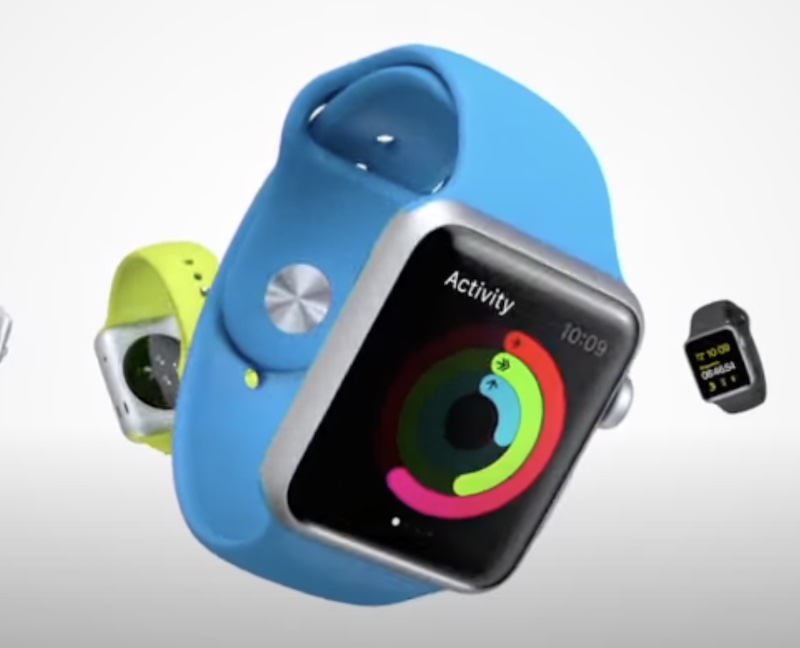
The original Apple Watch made a strong pitch to runners
I like many other runners were really excited to see the original Apple Watch when it was revealed in the fall of 2014 and then released in the spring of 2015. Apple had as a special guest for the reveal Christy Turlington Burns. She was at the event fresh off a half marathon with a pre-release Apple Watch while she was in Africa. She had a lot to say about why she liked it and what it offered for someone training for races. Apple even set up a blog to let her keep people up to date on her training for the NYC Marathon that year as she ran with her Apple Watch.
Around the same time as the Apple Watch release, the closest Garmin watch released at that time (and Garmin was the watch synonymous with activities such as running) was the Garmin Forerunner 225. This had a built-in optical heart rate sensor (so no more annoying heart rate strap just to see heart beats, though it was not nearly as good as current sensors) and a colorful screen (though not anything like the OLED on the Apple Watch). The Garmin had 10 hours of battery life with GPS use and up to 4 weeks in watch mode.
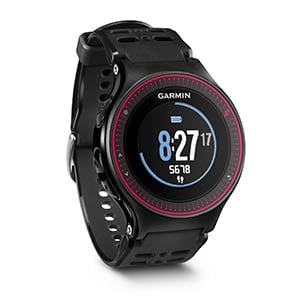
The Garmin Forerunner 225, the contemporary to the original Apple Watch
This was in contrast to the meager rated battery life of 18 hours – that was in general, not just GPS use. In fact, the early Apple Watch was not for the those were behind the middle of the pack marathoner runners as it would not last much past a 4 hour marathon.
Leaving Runners Behind
Impressions of the Apple Watch Series 4 from a Garmin Fan
Battery Life
However, here we are with Apple Watch Series 6 that is still rated at up to 18 hours of battery life (though it is possible to stretch that past the 24 hour mark or more, depending on usage – I was able to do 2 full days with runs on both days). This is with a lot of new battery technology improvements over the years. Instead of making it be something that would last longer for runners, Apple has chosen to put more general features in like a PulseOx sensor in it (a battery hog) and always-on display as well as a better display. This while Garmin put out a watch this year that has 80 hours of battery life with GPS on or up to 60 days of use with specific settings in place (Garmin Enduro).
This is what I said it would take to make me switch from Garmin to the Apple Watch Series 6
While the Apple Watch will last a longer marathon time than it used to, it is not going to let you go more than 2 days without charging the battery while getting your runs in. Instead of introducing quick charging that would charge it up to like 50% in 10 minutes, it still takes what seems like a longish time to charge, and this is even more apparent now since Apple has put their own Sleep Tracking in to encourage you to wear it at night instead of charging it at night, like they had originally. Instead, it takes 1 hour to charge up to 80% and 1.5 hours to charge it to 100%.
Running Metrics
This is a huge complaint from me. The Apple Watch is Apple’s own hardware with their own software – this means they can easily add features. While there are third-party apps that fill in this particular gap, Apple has a way of making their own apps a bit more attractive to use.
But, instead of giving runners their own choice for running metrics that are put on display in the Apple Workout app, you are stuck with exactly what Apple gives you. This is incredibly dumb because the metrics are already there, other apps can pull them out. For instance, I run with my Garmin having one of the data displays showing Lap Pace. This shows me my average pace for the mile I am in. Apple updated their own app a couple of years ago with Rolling Mile which gives you the average pace for the real-time rolling mile but I still want to put what I am used to up instead.
Not only, I also use things like Heart Rate lap (because I do not always want to adjust just based on what my heart rate is for that moment), Cadence (this is an important data point to ensure maximum running efficiency and the Apple Watch now has that), as well as any one of the dozens of data points that Garmin lets me select for my display.
Apple gives you what they give you – and there is nothing you can do to substitute those data points with those that you want.
“Appleness” with GPS
Anyone that has used a Garmin knows the routine – select that you want to start the run and then wait as it acquires GPS. I remember back in the days of my Garmin Forerunner 201 that I would need to put that watch outside while I went to change into my running clothes. If I was lucky, it had enough satellites by the time I was done changing.
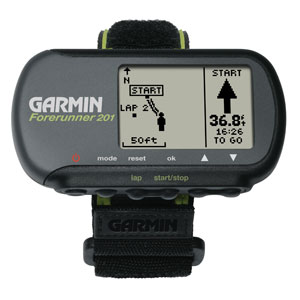
My original Garmin – the Forerunner 201. It would take up to 10 minutes to get a satellite fix!
Now, Garmin watches acquire satellite data pretty fast. Today, it grabbed it in like 5 seconds. Once it tells me it is ready, I know it is going to accurately track me.
However, with a run with the Apple Watch Workout app, you say you want to start and it starts counting down from 3 and then starts showing you the numbers. The problem is that it does this whether you have a satellite fix or not! Apple applies smoothing to the running track later to show you your route and it uses your stride early on to start giving you a pace and distance until it gets a satellite fix.
I have always hated that! It feels like you are kind of not prepared, to someone that is used to a Garmin that tells me I am good to go and then I push start to begin the activity. Instead, with Apple Watch Workout app, I click start and it just counts down regardless of satellite fix.
It’s ok, Apple, to not look “good” all the time! Give us a nice visual image of satellite acquisition or something like that if you do not want us to get bored but make sure that we know that we have a good satellite fix before we have to start the activity!
What I Love About the Apple Watch – And, Yes, Runners Definitely Can Run With It
Now, I said I would get back to the watch and the runner. While I firmly believe that Apple has moved away from making the Apple Watch be something targeted a bit at runners to being more of a health device overall, I still think the Apple Watch makes a compelling choice for those who view running as a good daily activity.
I have used just about every Apple Watch since the first one – and will be trying out the Apple Watch 7 when it comes out. Some of my most viewed posts on this blog have to do with Garmin vs Apple Watch posts so there are a lot of people that want help in making that choice. I am a firm Garmin fan, especially with how they have really turned their watches into a complete package for daily use (with various tracking metrics and workout recommendations – more on this in another post). But, I like to try out other watches as well. I am currently using the Coros Pace 2 Eliud Kipchoge edition.
What the Apple Watch Does Well for Runners
Not everyone is interested in getting every metric possible out of their run. There are plenty of runners that like the ability to leave their phone at home and head out for a run with their LTE-equipped Apple Watch. This lets them get important messages and even make phone calls if needed. The Apple Watch has easy app switching which lets you quickly get to the audiobook you are listening to, a map to see which way you should go on this new route, and you favorite workout app to track the run. Plus, it does it all with a beautiful screen that will get, reportedly, a little more space in the new Apple Watch 7.
The Apple Watch for the Rest of the Day
For lifestyle use, the Apple Watch blows the Garmin watches out of the water. It is so handy for travelers, for example, when you are in the airport to quickly see where you are headed for your gate (thanks to apps like TripIt) as well as get heads up information from the airline on your flight and even scan your boarding pass.
For long drives, I prefer my Apple Watch because I can just look at the watch to see what directions are coming up. When I keep my hands on the steering wheel in my favorite positions, it is just a casual look and I do not need to look at my phone or listen to the directions.
I can see photos in messages, reply to messages, handle simple tasks in apps like Twitter or banking apps, currency information, and the list goes on and on. For the rest of the 22-23 hours per day that I am not running, the Apple Watch is great for helping me with what goes on in my day.
But, as a runner that has been spoiled by the features and tech that Garmin has built in, I really do not see myself ever giving up all that for the convenience of the Apple Watch. It has become clear that Apple is not trying to attract the running crowd anymore to the Apple Watch and instead is focusing on the things that Garmin cannot do.
So, with just a few days left until the Apple Watch 7 is revealed, I certainly do welcome Apple to change my mind on all of that! In fact, I would love it if they prove me wrong! 🙂
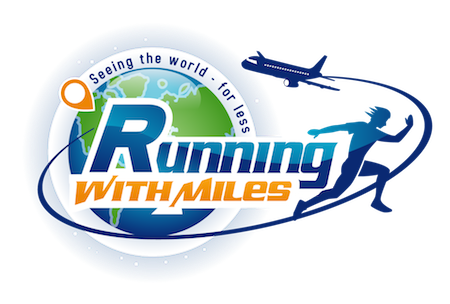
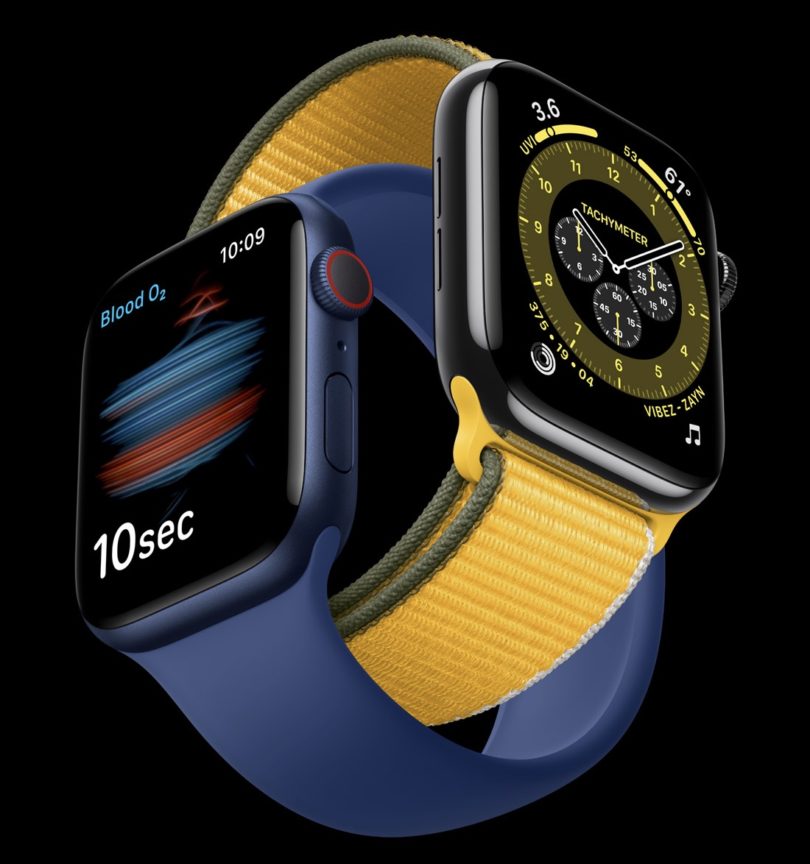


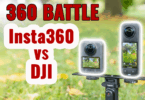

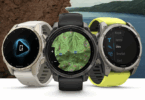


Agree with your comments. I particularly dislike the 3-2-1 countdown, as it makes the watch completely useless for track workouts in a group setting. When the coach give the signal to start the interval, you need the time and distance to start immediately. It’s the same with a race, trying to time passing over the timing mat for exactly when the stupid 3-2-1 countdown is done.
Regarding the satellite fix, you’re suggesting workouts may begin without a fix, which I certainly believe, but how do you determine this? It doesn’t sound like there’s anything on the watch that shows it in real time. Are you assuming there was no initial satellite fix by reviewing the data after the workout?
It depends if you run with your phone. Your phone can pass along location data (or update it later) but your watch is not always grabbing a location. So, I will try to start it and then do some zig-zag streets to see when it picks it up. It can take a little while (as in a couple of hundred meters) to grab it correctly. I have also seen others show the satellite data that it does not happen right away.
Good points on the countdown for races and intervals! Yeah, it just does not make sense. For races, I have my GPS synced and ready to go and then just start moving toward the start line with my finger on the “start” button. But, you know, there are always times where the crowd just stops and then starts again so it is not a streamlined thing at the starting line, not like Apple would want!
Can you imagine a world where Apple makes an Adventure version of the Apple Watch with solar and ruggedness like a Fenix! (dreaming)
You and me both! I did hear that there will be a more rugged, sport version at some point. Sadly, I think battery life will still be the Achilles heal, though. It would be too “un-Apple” to make it thick enough to pack serious battery life.
Look at an app called WorkOutdoors for the Apple Watch. This takes the Apple Watch to the next level, and is the value of a smart watch like a smart phone. The hardware is enhanced by the software, and allows it to improve over time.
Thanks so much! Yes, I am very familiar with that app and have used it before. My issue is more with Apple not making their standard app be more appealing to runners who want that data.
I will have to give it another try since it has been a while. Thanks!